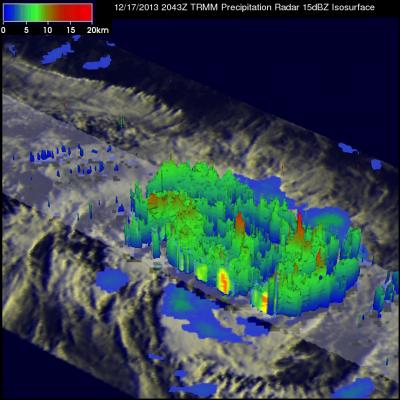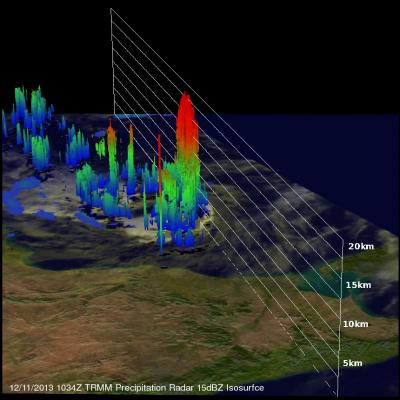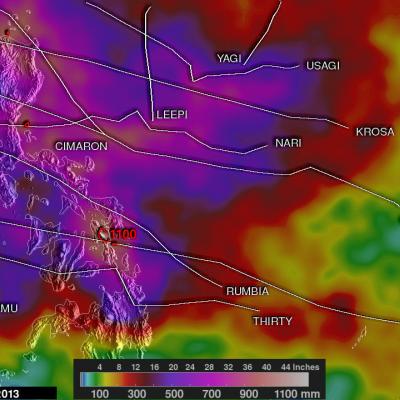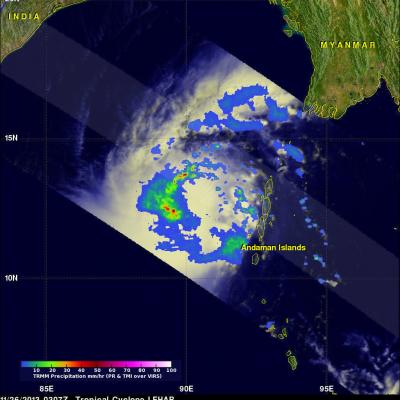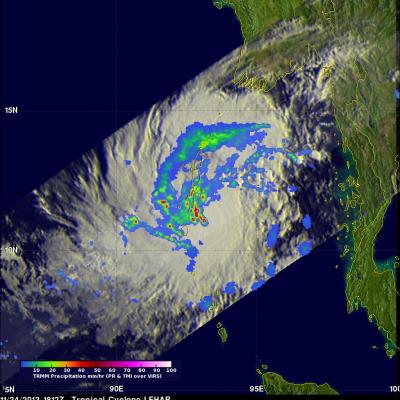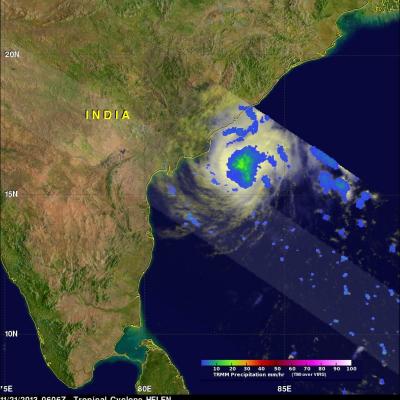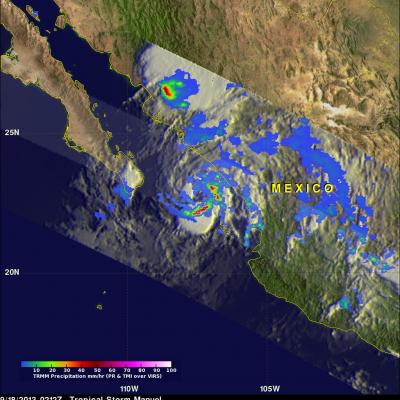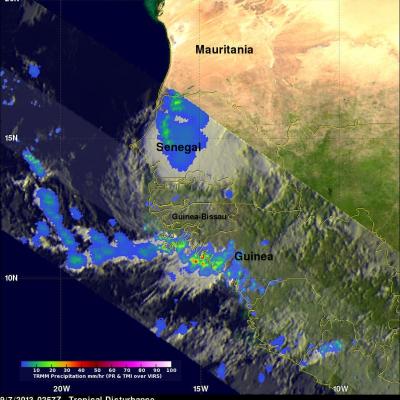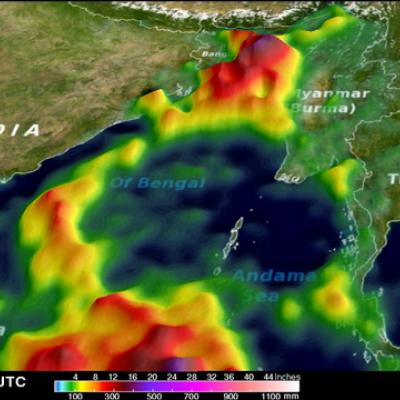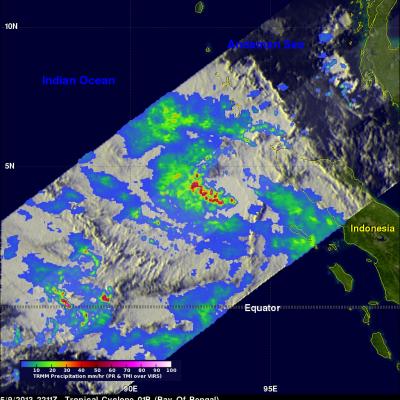TRMM Sees Tropical Cyclone Amara Forming
Yesterday Amara became the third tropical cyclone since October 2013 to form in the South Indian Ocean. TRMM Microwave Imager (TMI) and Precipitation Radar (PR) data captured by the TRMM satellite on December 16, 2013 at 2043 UTC were used in the image on the upper left. TRMM's Microwave Imager (TMI) and Precipitation Radar (PR) instruments showed that Amara was getting organized with scattered bands of moderate to heavy rain spiraling into the tropical cyclone's center. TRMM PR located some strong radar reflectivity values of over 47.7 dBZ in rain falling at a rate of over 76.9 mm/hr (~3


